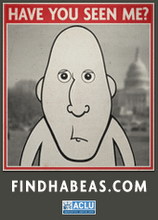Music hews to new constraints in the dawn of the Reagan and Thatcher years - 1980-83
One segment of pop music culture did not notice nor did it care about
the closing of the American mind. The launch of Studio 54 at the end of 1977
and the arrival of Sony Walkman in 1979 represented the bookends of the period
when selfish dilettante culture won the day. Largely content-free exercise
tunes dominated the pop charts because they were ideal soundtracks to jogging
in the park. Beat-heavy sex tunes were made for the dozens of clones of Studio
54 popping up around the country, where sex took place in semi-public and
cocaine was everywhere.
While there were plenty of good disco songs in the post-1979 period,
the innocent joy of early Donna Summer and KC hits was gone, as
self-infatuation drove a desperate 1980s club culture. There were worthy
offshoots, such as the rise of gay dance clubs and the particulars of the
Minneapolis sound dominated by Prince. But for the most part, disco showed its
worst as it optimized for the Reagan era (just as punk showed its worst as it
optimized for the hardcore Reagan-criticism era). And of course, the gay side
of disco culture soon fell victim to an emerging AIDS crisis.
The migration to the mundane moved
into high gear from early 1979 on. A few Top 40 hits were mildly interesting
(The Doobie Brothers’ “What a Fool Believes,” Nicolette Larson’s cover of Neil
Young’s “Lotta Love”), but many more were simply insipid (Rod Stewart’s “Do Ya
Think I’m Sexy?”, Melissa Manchester’s “Don’t Cry Out Loud”). Punks didn’t just
abandon Top 40 because underground playlists were more interesting. They were
driven from the format by relentless promotion of pablum. Meanwhile, in
physical formats, pre-recorded cassettes began eating into 8-track sales due to
Dolby noise-reduction features, but it would take a few more years for dubbing
decks arriving in the home for the home-made “mixtape” to make a mark in music
listening trends.
Wider acceptance of outsider
music in both its original and its toned-down “new wave” forms was a
double-edged sword. It was certainly gratifying to see Talking Heads and
Blondie make the charts, but as some regional punks became national touring
acts, there was a predictability present in 1979 that was not there in 1977.
Such commodification of rebel culture helped lead to the reaction known as no-wave
music, as Eno chronicled for the New York underground scene in the No New York album, and as enthusiastic artists like The Slits
and Lora Logic provided for U.K. audiences. Some might place Siouxsie and the
Banshees in that “outside the outsider” movement, though the Banshees later
evolved to a more Goth sound. (And before we reject the U.K. as a dreary place
in the 1980s, it helps to remember that The Pretenders snagged their first hit
in mid-1980, with bands like The English Beat following quickly behind. In
fact, an entire subculture of “fun first” emerged around Adam Ant and Bow Wow
Wow.)
Long before Reagan began
taking a rhetorical edge over Carter in the 1980 election season, one could
feel a conservative and homogenizing trend hitting the music scene, driven by
disco and the taming of punk. It’s important to remember that England did not
become a dark and dismal place with the assumption to power of Maggie Thatcher
in 1979, nor did “morning in America” happen instantaneously with Reagan’s
swearing in in early 1981. Rather, the 1980-81 period was a recession-driven
discontent era with post-punk in both funky and gloomy versions predominating,
disco in an odd sort of half-insurgence, and music as uncertain of its styles
as Reagan and Thatcher were uncertain of their ability to dominate the
political scene. It was only with Reagan’s victory over PATCO air traffic
controllers, and Thatcher’s efforts to turn the Falklands war into a national
jingoist crusade in 1982, that pop music itself succumbed to the broad
synthesizer swoosh that placed so much of music under corporate control, hence becoming
less interesting.
Before we make the simple
case that music consumers were responding to the “me culture” vibes that found
their ultimate instantiation in the Reagan and Thatcher years, it’s useful to
remember that big labels were driving this pop music trend as a way of
re-establishing dominance after the free-form years of punk. Yes, small labels
survived in certain genres like hardcore punk, but the largest labels,
including Warner, Columbia (later Sony), and Virgin structured their artist
development programs around multi-media dominance, inoffensive performance, and
the type of mega-events that began with the Buckingham-Nicks Fleetwood albums,
and were perfected in Michael Jackson. There was a downside to this for the big
labels however. The 1980s made them fat and happy, with the result that they
tried to use proven marketing techniques in the 1990s when the next round of indie
labels came around. The methods failed to work even before the arrival of the
Internet, and once downloading and streaming culture arrived, the major labels
were doomed. It just took them several decades to truly understand what zombies
they had become. And the moves toward obsolescence and death began in the
1980s.
Fans of 1980s hair-driven
hard rock might protest that bands like Van Halen, AC/DC, Bon Jovi, Sammy
Hagar, and Judas Priest got their start during this era; I would insist that
proves the point, in that these bands typically played more cliché-ridden, less
interesting rock than even their 1970s arena-rock predecessors. There were
regional exceptions to the rule – the twin cities of Minneapolis/St. Paul in
particular gave the world Prince, Lipps Inc., Husker Du, and The Replacements.
But the brighter lights only served to clarify how uninteresting the duller
lights were. One factor that drove many teens to rap by the early 1980s was the
major shift of pop charts to older and safe artists, while the AOR FM stations
favored hard-rock hair bands.
Nostalgia buffs can find a
bright spot in anything, and the epitome of this positivism came in the 21st-century
love for early-1980s Yacht Rock genre. Anyone who wants to include truly
innovative artists like Hall & Oates in that genre has a place to hang
their hat, but artists like Christopher Cross and Andrew Gold felt tedious in
1980 and remain tedious in the 21st century when spun in retrospect.
(A sad sign of the times was that Cross won four Grammys in early 1981,
displacing Pink Floyd’s The Wall in the
process.)
The reason new outsider artists like Laurie Anderson or Lydia Lunch
sounded so fresh was in part due to the background of pop music being devoid of
innovation in the first few years of the 1980s decade. Those with an edgier
sheen to their nostalgia in the 21st century might point to the
bands of the Paisley Underground as an early-1980s bright spot, and it’s true
that the reissue of Game Theory, Rain Parade and Three O’Clock albums in the
2020s garnered a lot of attention. But was the Paisley Underground big in that
1980-84 era? With the exception of The Bangles, not really. Still, one could
work in a record store in 1981 and be convinced that little had changed from
the heights of the late 1970s. The Police were riding high, prior to Sting’s
departure to perfect the worst in 1980s excess, and a new Irish band, U2, was
stirring a lot of attention, a good five years before Bono became insufferable.
There certainly was more
going on in subterranean subgenres, though their visibility often was greater
in the U.K. and Europe than statewide – the polyrhythms of Bow Wow Wow and Adam
and the Ants, for example. The August
1981 debut of MTV should have made a difference in that marginal visibility, since
MTV tried to air bands on the fringe, but for the most part, the cable network
seemed to favor only the more vapid of the outsider artists, such as Flock of
Seagulls or A-Ha.
MTV’s arrival accentuated two
trends that already were bubbling into mainstream consciousness. First, the
notion of the short-form music video as a new art form had been expanding since
the era of The Beatles’ “Rain/Paperback Writer,” but MTV rotation made art in
video a necessity, not an afterthought. Second, MTV’s visual eye candy became
baseline only months before artists like Madonna and Paula Abdul raised
choreography to a status equal to that of music arrangement. Dancehall disco
and aerobic workouts at the gym already had underscored the role of
performative dance to a level far greater than in disco’s early days, but the
imminent arrival of Prince and Madonna choreography on MTV would make the dance
element a permanent feature.
Videos often were created for
the celebrity visual potential, as when Rex Smith of Grease fame was paired with Rachel Sweet for a remake of
“Everlasting Love.” In MTV’s first year, some bands like ABC and Spandau Ballet
seemed to carry the theatrics to melodramatic levels. Dozens of “serious”
musicians would complain that this meant almost a necessary de-emphasis on
lyricism and songwriting styles, but dance and Broadway-style performance were
both djinns that would not go back in the bottle.
I had moved from Tempe to
Tucson to take advantage of an unusual degree program in science journalism at
the University of Arizona. My 8th St. duplex was nextdoor to Tucson
High School, where low-riders were displayed to a soundtrack of Tom Tom Club’s
“Genius of Love” and War’s “Low Rider.” The duplex also was two blocks from the
notorious Tumbleweeds Bar. In addition to seeing bands like Black Flag and X early
in their careers, I got to experience the musicians of Green On Red,
Pedestrians, and UPS, that later formed what was known as Tucson Hard Core or
THC. But it wasn’t necessarily where I wanted to go.
I took a long bicycle trip
through northern California to the Oregon border in the summer of 1981, giving
me a ground-level view of where musical trends were heading in the larger
cities of the Pacific Northwest. For the most part, it seemed we in Tucson were
aware of most Bay Area trends, and might even have them beat here and there.
Back in Tucson, the last few semesters of 1981-82 were grim times, living off a
50-lb. bag of millet and facing the murder of a friend just weeks before
earning my degree. I was looking for sullen dance music as a soundtrack, and
the only offerings that seemed to fit that limited bill were posthumous Joy
Division singles, Remain in Light by
Talking Heads, and in particular, Under the Big Black Sun by X, the
latter a perfect description of living in Tucson in a funk. Once the former Joy
Division had reassembled following Ian Curtis’s suicide, to create the
hyper-dance collective New Order, the writing seemed to be on the dance club’s
walls.
After getting back together
with a Tempe girlfriend, we spent the summer in the Arizona mountains, and I
then moved to Albuquerque to take a science reporter job with the Albuquerque Tribune. Locally, there were aspects of the music
scene I found exciting, but it was hard to insert it into a national or
international moire that made any sense. New national trends were bubbling just
under the surface, as evidenced by a University of New Mexico show in which the
young Athens band REM opened for Gang of Four. Yet the morphing of punk into
hardcore seemed to be an exercise in Reagan-bashing tedium. At the same time,
mainstream culture was filled with bubbly clones of Sheena Easton, or
interchangeable hard-rock bands with forgettable lyrics – Journey, Foreigner, Loverboy,
Styx, REO Speedwagon.
To be sure, there were still
reasons to give in to pure pop – any of the Hall & Oates singles of the era
or “Tainted Love” by Soft Cell. But why did the full smorgasbord platter of
popular music suddenly feel so devoid of substance? At a party in early 1983,
the arts editor of the Albuquerque Tribune showed me
an early instantiation of a technology scapegoat. I could blame my music ennui
on the compact disc.
Coming in three weeks (June 28) - "Chapter 9 - The CD as Unfortunate Equalizer"










No comments:
Post a Comment